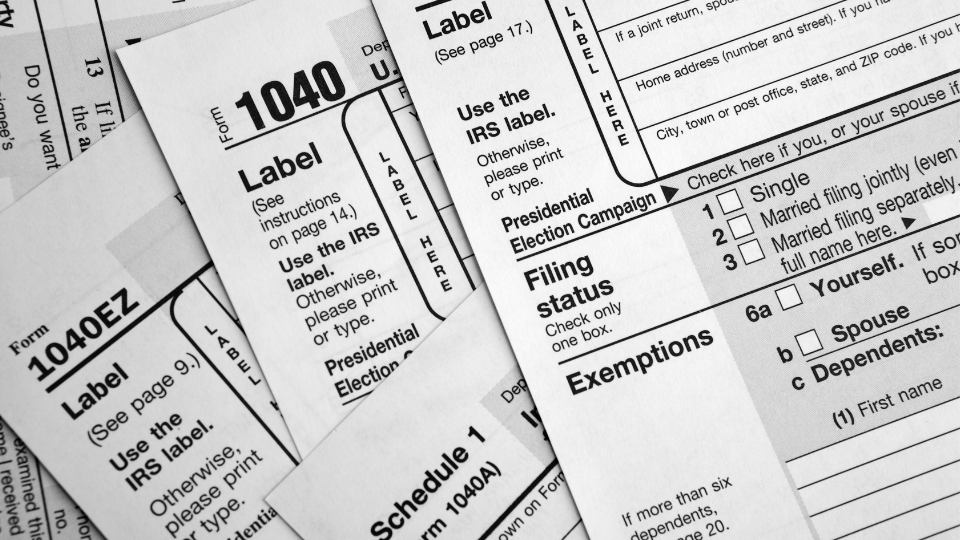Self-employment is great, but it can make the mortgage application process somewhat challenging. The good news is that Form 91 by Freddie Mac can simplify things for both lenders and self-employed borrowers by streamlining the process and accurately assessing a borrower’s self-employed income, which can lead to faster approvals.
Our guide provides a comprehensive, step-by-step breakdown of how to accurately complete the form while highlighting common pitfalls to avoid. It also highlights how the power of automation tools like IncomeXpert can optimize your experience.
Main takeaways from this article:
- Freddie Mac Form 91 is essential for evaluating the income of self-employed borrowers to determine loan eligibility, requiring careful attention to documentation and calculations.
- Mistakes such as misclassifying nonrecurring income or failing to verify income stability can lead to errors and loan processing delays.
- Form 91 should not be used to calculate rental income or combine multiple businesses, as these practices can significantly complicate the underwriting process.
- Using IncomeXpert can streamline the process of calculating self-employed income, ensuring adherence to Freddie Mac’s guidelines and reducing manual errors.
What is Freddie Mac Form 91?

Freddie Mac Form 91 provides a standardized framework for lenders to assess the income of self-employed borrowers. Unlike traditional approaches, which focus solely on net income, Freddie Mac’s guidelines prioritize income stability and predictability. This ensures a reliable foundation for lenders to make informed decisions.
For your convenience, you can access and download Form 91 here for free.
Who uses Freddie Mac Form 91?
Freddie Mac Form 91 is primarily used by stakeholders in the lending process, including:
- Lenders and underwriters: These professionals use Freddie Mac Form 91 to determine the eligibility of self-employed borrowers.
- Loan officers: Loan officers rely on the information provided in the form to guide clients through the application process.
When is Form 91 used?
Freddie Mac Form 91 is a recommended tool for analyzing and documenting self-employed borrower income. It provides a structured approach to income verification in line with Freddie Mac guidelines. While many lenders use the form directly, others rely on systems that follow the same methodology—like IncomeXpert—to automate the process and reduce manual error.
Step-by-step guide to completing Freddie Mac Form 91

This section provides a structured approach to filling out the Freddie Mac Form 91. By following these steps, you can effectively compile the necessary information, calculate qualifying income, and reduce errors that can lead to delays in loan approvals.
1. Meet documentation requirements
First, collect all required documentation that supports the borrower’s income claims. This documentation includes:
- IRS Form 1040: This is the individual income tax return form that includes key information about the borrower’s overall income.
- Schedule B: If the borrower earns income from interest or dividends, this form will provide relevant details.
- Schedule C: This schedule outlines the income and expenses directly related to self-employed individuals’ businesses.
- Schedule E: This form reports income from rental properties as well as distributions from partnerships and S corporations.
- Schedule K-1: For borrowers who are involved in partnerships or own shares in S corporations, this document provides details about their share of income, deductions, and credits.
- IRS Form 1099: This form should be included if the borrower has received income as an independent contractor; it reports non-employee compensation that is not subject to payroll tax withholding.
2. Identify stable monthly income sources
Once you have gathered the necessary documentation, the next step is to identify the stable monthly income sources. This involves reviewing the borrower’s income history, ensuring that any income considered for loan approval is consistent and likely to continue in the future. In other words, you need to know where the borrower’s income is coming from.
- Does the borrower have a regular salary?
- Do they run an established business?
- Is there another source of recurring income?
3. Apply income adjustments correctly
After identifying stable income sources, it is essential to apply the appropriate income adjustments. Doing so helps present a clear picture of the borrower’s actual income capability. The adjustments usually involve the following aspects:
- Depreciation and amortization: Adjust for these non-cash expenses as they do not affect the cash flow available for loan repayment.
- Business expenses: Consider necessary deductions that reflect the borrower’s actual business costs.
- Self-employment wages: Include a proportional salary paid to the borrower if they draw a wage from their own business.
- Rental income adjustments: Modify rental income reported in Schedule E for factors such as vacancy rates and management fees to ensure a conservative estimate.
- Pass-through business distributions: Accurately include any distributions received from partnerships or S corporations, ensuring that they align with Freddie Mac’s income calculation guidelines.
4. Calculate qualifying income
After applying all of the necessary adjustments, the next step is to calculate the qualifying income. This final figure will be a crucial factor in determining the borrower’s eligibility for the loan. Follow these steps:
- Start by summing the adjusted amounts from all stable income sources identified in earlier steps. This includes salaries, business profits after adjustments, rental income, and any distributions from partnerships or S corporations that have been modified per the guidelines.
- To ensure that the resulting figure reflects the borrower’s consistent earnings, it may be necessary to average the income over a specific period. For instance, if a borrower has income from a business, you might calculate the average monthly income by taking the total of the adjusted income from the past two years and dividing it by 24 months.
- If the borrower’s income varies due to seasonal business activities, ensure that the calculation captures these variations. In such cases, it may be beneficial to look at multiple years of income data to establish a more accurate average that reflects earning capabilities over time.
- If there are known events that might affect future earnings, such as expected increases in business contracts or potential declines, consider these factors in the qualifying income.
5. Review and verify final income calculations before submission
Before submitting Freddie Mac Form 91, thoroughly review all calculations and data entries. Make sure all income sources are correctly listed, all adjustments are accurately applied, and nothing is missed. Accuracy here is crucial to avoid mistakes that could lead to loan rejections or compliance problems.
Freddie Mac’s Loan Product Advisor (LPA) and with Form 91
The Loan Product Advisor (LPA) is Freddie Mac’s automated underwriting system designed to assess the eligibility of loan applications, particularly for self-employed borrowers.
Before a loan can be submitted to the LPA, lenders must meticulously verify and manually input the calculated income sourced from Form 91 into the system. This step is crucial because the accuracy and reliability of the income data directly impact the underwriting decision.
Common mistakes to avoid when using Freddie Mac Form 91

It is important to make sure there are no errors on Form 91 so that the approval process goes smoothly. Here are some common mistakes to look out for:
Misclassifying nonrecurring income as stable income
Lenders sometimes mistakenly classify one-time incomes (such as bonuses) as recurring income, which can lead to miscalculations and potential loan denials. To avoid making this mistake, focus exclusively on stable income streams.
Failing to verify self-employed income stability
Neglecting to verify income stability for self-employed borrowers is a major mistake. Lenders must ensure that reported income comes from reliable sources by analyzing income statements and tax returns for a consistent earnings history. A thorough review of documentation is especially crucial for businesses with variable revenues.
Combining multiple businesses on one Form 91
Mixing depreciation from more than one business can lead to confusion. For instance, if a borrower has several partnerships using IRS Form 1065, the depreciation figures may become indistinguishable on a single Form 91. This lack of clarity can create confusion and complicate the income verification process.
To maintain clarity and facilitate accurate analysis, it is advisable to create separate Form 91 documents for each business entity to prevent ambiguities and enable more straightforward income assessments.
Ignoring Freddie Mac’s self-employment solvency requirements
Freddie Mac Form 91 lacks specific indicators for distributions or solvency tests required by Freddie Mac’s guidelines. This absence can lead to significant errors in income eligibility assessments since lenders might overlook essential solvency verification.
To comply with these requirements, it’s critical to familiarize yourself with the guidelines outlined in AllRegs section 5304.1. Understanding the necessary solvency tests and income requirements is vital for ensuring that income reported on Form 91 is eligible for loan consideration.
Using Form 91 to calculate rental income
Many lenders mistakenly attempt to use Freddie Mac Form 91 for calculating rental income, which is not its intended purpose. Form 91 is primarily designed for assessing self-employed income and does not accommodate the complexities associated with rental income calculations.
To accurately assess rental income, it is advisable to use Freddie Mac Form 92, specifically created to handle rental income for up to six properties. Using the correct forms ensures compliance with Freddie Mac’s guidelines and promotes more accurate income evaluation.
Why manual Form 91 calculations can delay loan approvals

Freddie Mac’s meticulous requirements necessitate accuracy in completing Form 91, which involves intricate details and comprehensive calculations.
Any errors could lead to the miscalculation of income figures, the rejection of loan applications, and possible compliance issues. Therefore, as a lender, it’s crucial to ensure accuracy to maintain compliance with Freddie Mac’s stringent standards and to keep the process running efficiently.
How IncomeXpert enhances Form 91 automation
IncomeXpert revolutionizes the completion of Form 91 by automating income verification for self-employed borrowers, ensuring accuracy and compliance while streamlining the underwriting process, ultimately improving efficiency for lenders.
Applies Freddie Mac’s income calculation guidelines
IncomeXpert seamlessly integrates Freddie Mac’s income calculation guidelines into its functionality, enabling lenders to calculate income with precision. This ensures adherence to industry standards and enhances the reliability of income assessments, facilitating smoother loan approvals.
Identifies income inconsistencies before underwriting submission
With advanced analytical capabilities, IncomeXpert proactively identifies discrepancies and inconsistencies in income documentation prior to the underwriting submission. This early detection minimizes potential issues, allowing lenders to address concerns upfront, thus reducing delays and improving the overall approval process.
Supports multi-business and complex income scenarios
IncomeXpert accommodates borrowers with multiple business interests or complex income situations, expertly tracking and calculating income from various sources. This functionality simplifies the evaluation of diverse income streams, ensuring lenders have a comprehensive understanding of each borrower’s financial landscape.
Extracts and processes tax return data automatically
IncomeXpert automates the extraction and processing of tax return data, eliminating the need for manual entry. By efficiently gathering relevant financial information, lenders save time while enhancing data accuracy, contributing to more reliable income assessments and faster loan processing.
Reduces manual errors and accelerates loan processing
By reducing manual errors and accelerating loan processing, IncomeXpert Plus enhances overall productivity in the mortgage lending process, allowing lenders to focus on building client relationships and closing loans more efficiently.
Automate self-employed borrower income verification with IncomeXpert
In mortgage lending, accuracy in income verification for self-employed borrowers is paramount. The question is, what is the best way to achieve this accuracy?
IncomeXpert offers a robust solution that streamlines the completion of Freddie Mac Form 91. The tool ensures compliance with income calculation guidelines while minimizing the risk of errors. By automating the income verification process, IncomeXpert not only saves time but also enhances the overall underwriting experience for lenders.
Want to experience these benefits firsthand? Request a Demo!


2 Responses
I really like your post as they are always well done and so much easier to understand
Thanks Debbie I appreciate the feedback!